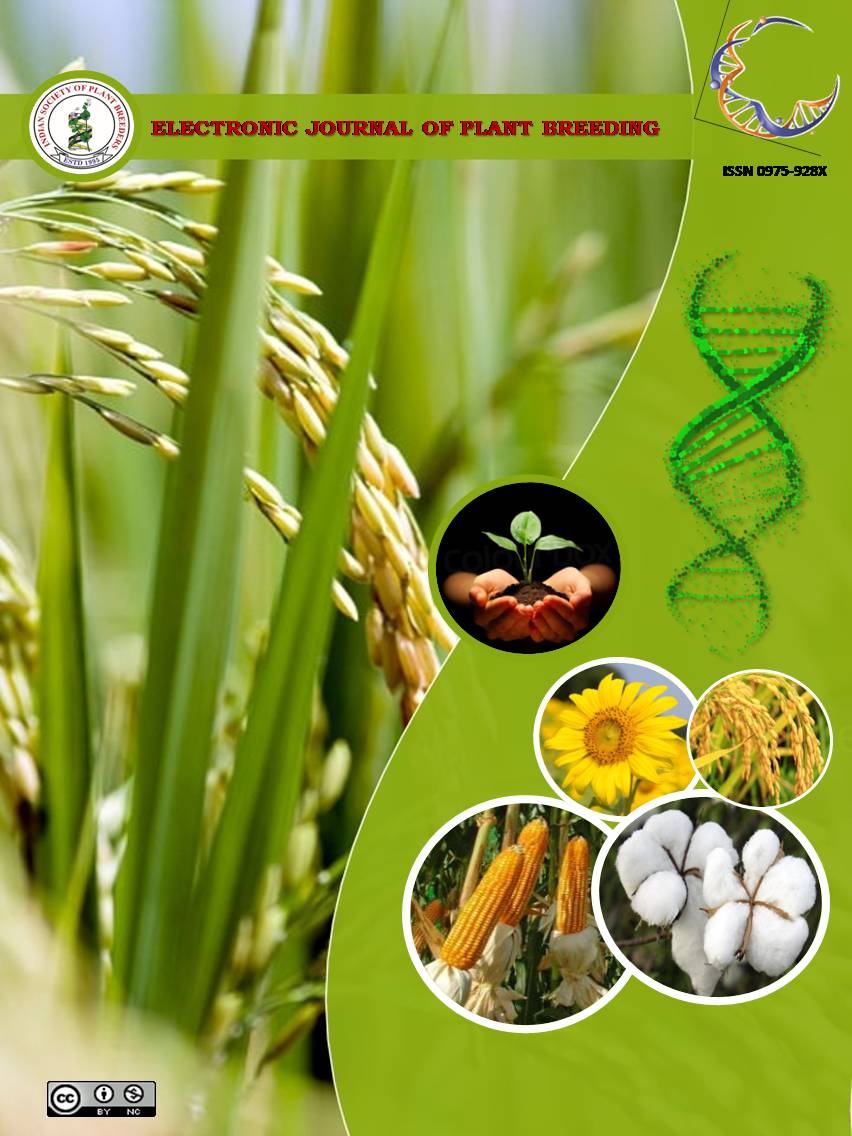Combining ability and gene action for grain yield and its attributing traits in pearl millet (Pennisetum glaucum [L.] R. Br.)
Abstract
Sixty hybrids of Pearl millet were developed by crossing six male sterile lines with ten diverse inbred lines and studied for its combining ability effects. The analysis of variance revealed significant difference between parents for all the characters under study. The estimates of combining ability variances indicated that the importance of both additive and non-additive gene action in the control of most of the characters under study. The mean degree of dominance (σ2D / σ2A)0.5 was found greater than unity for characters days to maturity, grain yield per plant, stover yield per plant and protein content, indicating the over dominance.The CGMS line ICMA-98444 was found as good general combiners for days to maturity, plant height, earhead length and earhead girth. The CGMS line JMSA-9904 were found good general combiner for days to 50 % flowering and earhead length but poor combiners for plant height, earhead girth and stover yield per plant. Three inbreds J-2433, AIB-23 and J-2490 were good general combiner for earhead girth, while J-2526 and AIB-11 was good general combiner for earhead length. Among the sixty hybrids, 12 hybrids showed the best performance with significantly positive sca effect for grain yield. The cross ICMA-04999 x J-2526 had significant and positive sca effects for grain yield per plant and stover yield par plant.

It is certified that:
- The corresponding author is fully responsible for any disputes arising due to the publication of his/her manuscript.
- The article has been seen by all the authors who are satisfied with its form and content.
- The sequence of names of authors in the by-line is as per their relative contribution to this experiment, giving due credit to all scientists who made notable contribution to it.
- All the authors fully understand that inclusion of any other co-authors or exclusion of any co-authors is not possible once the article has been submitted to the journal.
- The corresponding author takes full responsibility for this article.
- The address of the organization where the research was conducted is given.
- The article is exclusive for this journal, and the results reported here have not been sent (and will not be sent during its consideration by this journal) for publication in any other journal.
- Authors agree to abide by the objective comments of referees and do agree to modify the article into a short note as per the recommendation, for publication in the Electronic Journal of Plant Breeding.
- If published in Electronic Journal of Plant Breeding, the copyright of this article would vest with the Indian Society of Plant Breeders, who will have the right to enter into any agreement with any organization in India or abroad engaged in reprography, photocopying, storage and dissemination of information contained in it, and neither we nor our legal heirs will have any claims on royalty.


